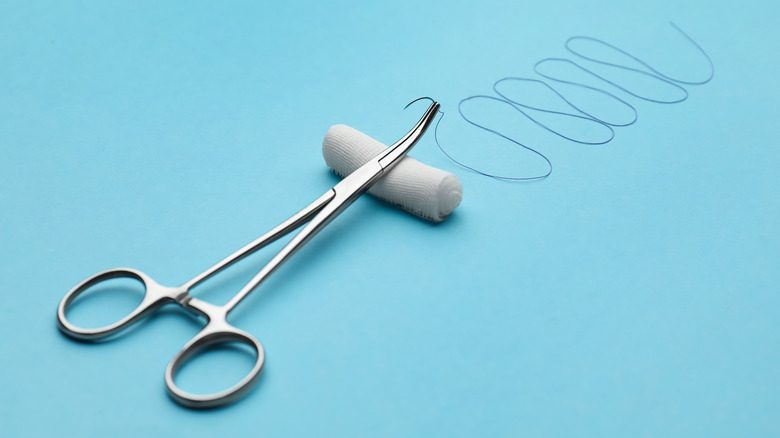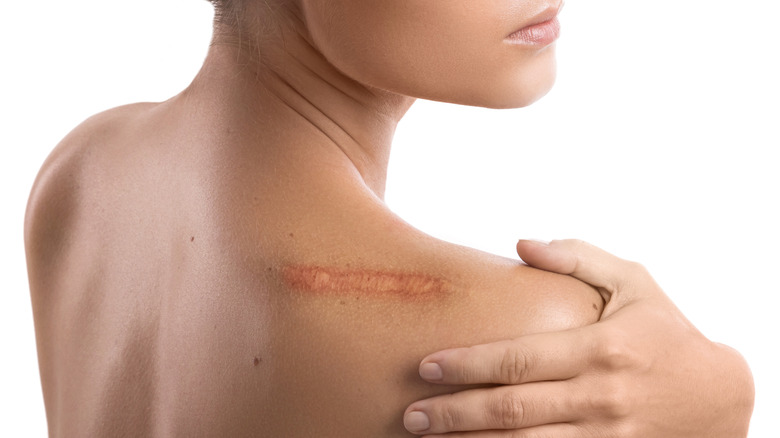How Do Dissolvable Stitches Work?
Sutures — commonly known as stitches — aid in the body's healing process by holding the tissues of a wound tightly closed as they meld back together (via WebMD). Stitches are generally not required for mild surface injuries, such as scrapes, but are intended for deeper wounds that may excessively bleed or open. While non-absorbable sutures are generally made of silk or nylon, in some cases, a doctor may opt to use dissolvable stitches instead, as per MedicalNewsToday. In this event, removal is unnecessary, as these sutures are made with either degradable polymeric materials (via Journal of Chemical Education) or animal proteins. These materials are able to be absorbed by the body and will naturally dissolve on their own.
Dissolvable stitches more easily conform to a wound's shape (via MedicalNewsToday). Therefore, they can be a good fit for wound closures following oral surgeries, skin grafts, C-section deliveries, or childbirth-related vaginal tearing. The timeline for dissolvable stitches to fully break down can range based on the material they're made out of and the needs of the injury. For instance, some stitches can dissolve in as little as 10 days (via Verywell Health), while a C-section wound may require sutures that don't dissolve for a few weeks. Joint replacement procedures may require dissolvable stitches that stay intact for several months (via MedicalNewsToday). In order for dissolvable stitches to work as they should, it's important to practice proper aftercare.
Proper aftercare for dissolvable stitches
Your doctor will inform you of when it's safe to shower following a procedure, but you'll want to refrain from swimming or soaking in a bath (via MedicalNewsToday). While showering, wash the area gently with mild soap and water rather than scrubbing, as per Verywell Health. Start by cleaning the middle of the incision and work your way outward past the edges. Do not repeat by washing backward again toward the middle, as doing so can expose the wound to germs (via Intermountain Healthcare).
Afterward, pat-dry the area and change any dressings as needed (via MedicalNewsToday). While it may be somewhat itchy and uncomfortable, Verywell Health says you'll want to refrain from picking at the skin or moisturizing the area if you experience scabbing around your sutures, unless approved by your doctor. Additionally, be on the lookout for possible symptoms of infection, such as redness, swelling, pain, warmth, or discharge, and consult with your physician. Do not attempt to treat the area with hydrogen peroxide, as this can weaken dissolvable stitches and may prompt irritation or infection.
Once recovered, dissolvable stitches can still take several months or more to fully break down, which is why some patients report feeling the sutures underneath their skin, even after they've been absorbed (via Verywell Health). This is not uncommon, and in some cases, it may be scar tissue the patient is feeling, rather than the sutures.


